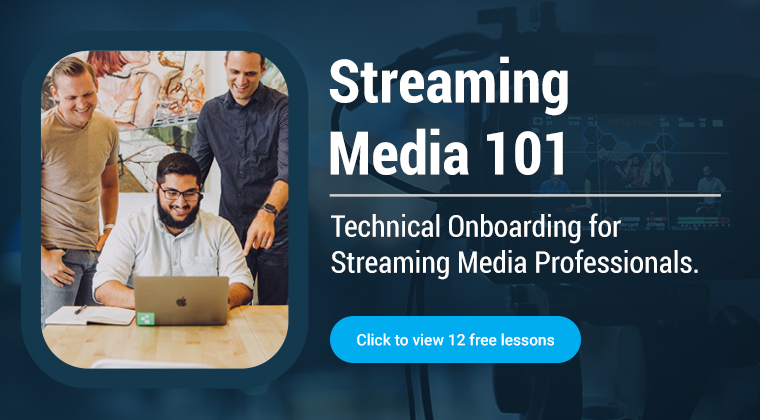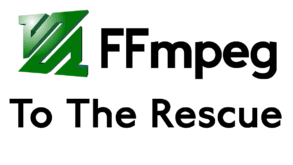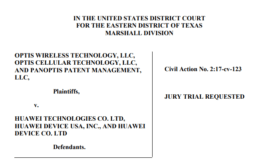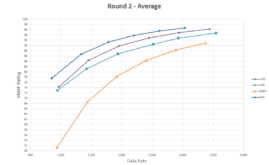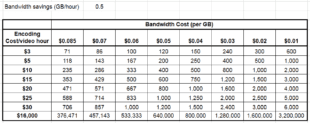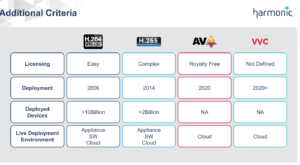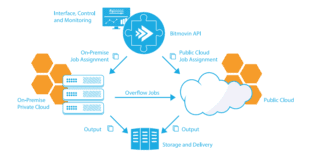A recent consulting project involved computing the VMAF, SSIM, and PSNR scores of 30 fps 480p video encoded from a 60 fps 1080p source file. I’ve not performed measurements like this in the past and assumed that simply converting the 60 fps sources file to 30 fps via the “-r” option would convert from 60 fps to 30 fps and …
Read More »Huawei to Pay $7.7 Million Judgment for H.264 Patent Infringement
In his Essential Patent Blog, intellectual property attorney David Long recently reported that a jury trial in Federal District Court in Texas found that Chinese smartphone manufacturer Huawei infringed upon an H.264-related patent owned by PanOptis, a non-practicing entity (NPE). The jury also found that the H264 award wasn’t limited by FRAND (Fair, Reasonable, and Non-Discriminatory) requirements typically applied to patents …
Read More »Webinar on Unified Patent’s Video Codec Zone
New Service by Unified Patents Assists Companies with Patent-Related Royalty Claims Monday, September 10, 20182:00 PM ESTRegister below Companies deploying HEVC and other video technologies face skyrocketing licensing costs and uncertainty about future demands. In 2017, Apple paid Nokia $2 billion dollars in unexpected H.264 royalties, while last month Chinese smartphone manufacturer Huawei was ordered to pay PanOptis $7.7 million for use …
Read More »H264 Royalties Just Became a Lot More Uncertain
In his Essential Patent Blog, intellectual property attorney David Long recently reported that a jury trial in Federal District Court in Texas found that Chinese smartphone manufacturer Huawei infringed upon an H.264-related patent owned by PanOptis, a non-practicing entity (NPE). The jury also found that the H264 award wasn’t limited by FRAND requirements typically applied to patents essential to a …
Read More »First AV1 Hardware Acceleration at IBC
I’m not going to IBC, but if you are, please check out AV1 hardware encoding acceleration from Socionext. Here’s the blurb from the press release. There will be a demonstration of the world’s first hardware-based implementation of an AV1 encoding system. AV1 is a new, advanced video data compression standard established by theAlliance for Open Media, a consortium that includes Socionext, …
Read More »First Look of AV1 Up on Streaming Media
My first look of the AV1 codec is up on Streaming Media Magazine. Here’s the pithy summary. “These tests revealed glimpses of very alluring quality as compared to existing codecs, but at a current encoding cost that’s far beyond what the vast majority of video publishers can afford to pay. How many devices will play AV1 without some form of …
Read More »Saving Streaming Costs: Adding a New Codec
Number of hours of streaming required to recoup 60-minute encoding cost. Author’s note: The author would like to acknowledge the shocking fact that he is not perfect and that this lack of perfection often reveals itself, quite embarrassingly, in spreadsheet-intensive articles. I did the best I could and checked every number and assumption multiple times, but if something doesn’t look right, …
Read More »Impressive Early Results for Versatile Video Coding (VVC)
MPEG is working on a new coding standard called Versatile Video Coding (VVC). A colleague recently sent me a presentation from Thierry Fautier, VP Video Strategy at Harmonic, which contained some preliminary encoding results to be formally presented at a paper given at IBC. The presentation was from a short talk Thierry gave at the Mile High Video 2018 conference. The presentation …
Read More »Save on Encoding Costs: Cut Cloud Encoding Charges
This is the fourth article in a series on saving encoding and delivery costs. The first three articles are: Saving on Encoding and Delivery: Dynamic Packaging Saving on Encoding and Streaming: Deploy Capped CRF Saving on Encoding: Adjust Encoding Configuration to Increase Capacity Cloud encoding is a great alternative for producers who don’t want to invest CAPX for their own …
Read More »My AV1 First Look: Good Quality, Glacial Encoding Speed
The launch of FFmpeg 4.0 gave many compressionists their first chance to test the new AV1 codec, which is included in experimental form. For the first time, you had a single encoder that could produce all relevant codecs: H.264 with the x264 codec, HEVC with the x265 codec, VP9 using the Google Libvpx-vp9 codec, and AV1 using the LibAOM codec. …
Read More » Streaming Learning Center Where Streaming Professionals Learn to Excel
Streaming Learning Center Where Streaming Professionals Learn to Excel

